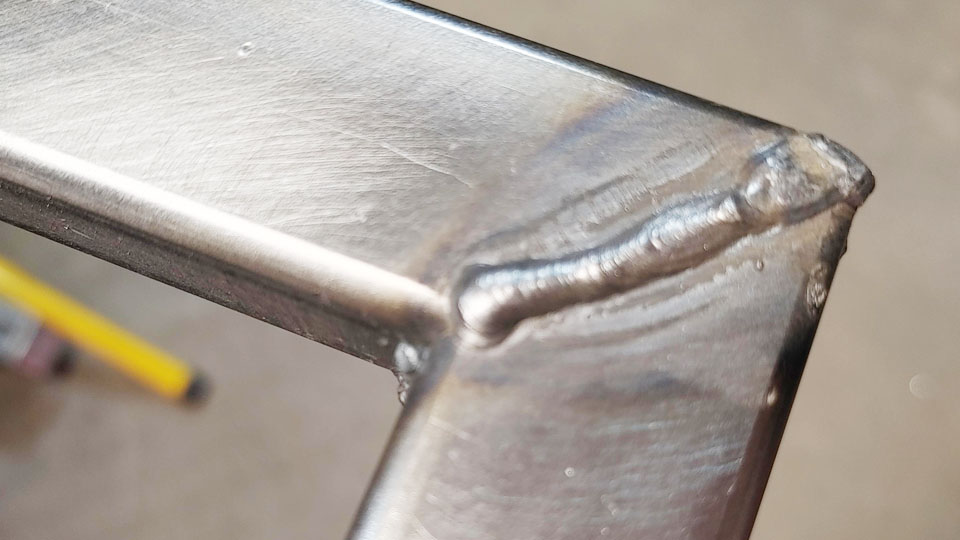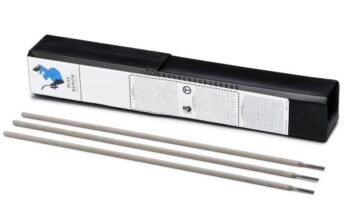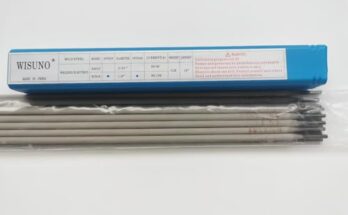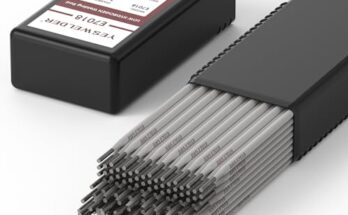Stick welding square tubing is a skill that comes in handy for a variety of metal fabrication projects. Whether you’re building a frame, reinforcing a structure, or making custom metalwork, knowing how to properly weld square tubing with a stick welder is essential.
I’ve worked with square tubing many times, and I can tell you that while stick welding isn’t always the first choice for thin materials, it’s a powerful and reliable method when done right.

Image by reddit
If you’re wondering whether stick welding is a good option for square tubing, the answer is yes. It’s one of the most accessible welding methods, works well in outdoor conditions, and is excellent for thick steel tubing.
It does require the right electrode choice, welding technique, and preparation to get solid, clean welds. I’ll walk you through everything you need to know so you can stick weld square tubing with confidence.
Why Use Stick Welding for Square Tubing?
Stick welding, also known as Shielded Metal Arc Welding (SMAW), is a widely used process that works well on structural steel, heavy-duty projects, and situations where other welding methods might not be practical.
Here are a few reasons why stick welding is a good choice for square tubing:
- Works on thick tubing – Stick welding provides deep penetration, making it ideal for thick-walled square tubing.
- No shielding gas required – Unlike MIG or TIG welding, stick welding doesn’t require external shielding gas, making it suitable for outdoor welding.
- Portable and cost-effective – Stick welders are simple, affordable, and easy to transport.
- Good for dirty or rusty metal – While cleaning the metal is still recommended, stick welding is more forgiving on slightly rusted or dirty tubing.
Stick welding does have its challenges. It can produce more spatter than other methods, and controlling heat on thin tubing can be tricky. But with the right approach, you can achieve strong and durable welds.
Choosing the Right Electrode for Stick Welding Square Tubing
The electrode you choose plays a major role in the strength and appearance of your weld. Here’s a comparison of the most commonly used electrodes for welding square tubing:
| Electrode | Best For | Pros | Cons |
|---|---|---|---|
| 6010 | Deep penetration on thick steel | Fast freeze, works well on dirty metal | Harder to use, requires DC current |
| 6011 | General-purpose welding, works on AC and DC | Good penetration, works on rusty metal | More spatter, rougher welds |
| 6013 | Thin to medium steel tubing | Smooth arc, easy to use, low spatter | Less penetration, weaker on thick tubing |
| 7018 | Structural steel, strong welds | Clean welds, high strength | Requires dry storage, needs more skill |
For welding square tubing, 6011 or 7018 electrodes are often the best choices. 6011 is great for general-purpose welding, especially if the tubing isn’t perfectly clean, while 7018 provides strong and smooth welds but requires dry storage to prevent moisture absorption.
If you’re working with thin tubing, 6013 is a good option because it produces a smoother weld with less penetration, reducing the risk of burn-through.
Preparing Square Tubing for Stick Welding
Before striking an arc, taking the time to properly prepare your square tubing can make a huge difference in the quality of your welds.
Cutting the Tubing
- Use a metal-cutting saw, chop saw, or an angle grinder with a cut-off wheel for precise cuts.
- Make sure your cuts are straight to ensure a tight joint fit-up.
Cleaning the Metal
- Remove rust, paint, and mill scale using a wire brush, grinder, or flap disc.
- Wipe the surface with acetone or rubbing alcohol to eliminate oil or grease.
Beveling the Edges (For Thick Tubing)
- If your tubing is thicker than 1/8 inch, bevel the edges at 45 degrees using a grinder.
- This helps ensure full penetration and a stronger weld.
Clamping the Tubing in Place
- Use clamps or magnetic squares to hold the tubing in the correct position.
- If you’re welding a frame, make sure everything is square and level before tacking.
Types of Joints for Stick Welding Square Tubing
The way you position and weld the tubing will impact both the strength and appearance of your weld. Here are the most common types of joints:
Butt Joint (Simple 90-Degree Joint)
- Two pieces of tubing are joined end to end.
- Works best with 6011 or 7018 electrodes for strong penetration.
Miter Joint (Angled Cut for Clean Corners)
- Both ends are cut at 45-degree angles for a precise fit.
- Used in furniture, gates, and other visible structures.
Lap Joint (One Tube Overlaps Another)
- Provides extra strength and is commonly used for heavy-duty welding.
- Works well with 7018 electrodes for structural strength.
T-Joint (Perpendicular Tubing)
- One tube is welded to the side of another, forming a “T” shape.
- Requires deep penetration to ensure a solid connection.
How to Stick Weld Square Tubing
Once your tubing is prepared, it’s time to start welding. Here’s the step-by-step process I follow:
Tack Weld First
- Place small tack welds at each corner to hold the tubing in position.
- Double-check alignment before proceeding with full welds.
Adjust Your Welder Settings
- Set the amperage based on the electrode and tubing thickness.
- A good starting point is 75-125 amps for 1/8-inch tubing using a 6011 or 7018 rod.
Strike the Arc and Begin Welding
- Hold the electrode at a 15-20 degree angle in the direction of travel.
- Use a drag or push motion, depending on the electrode type.
Control Heat Input
- Avoid burn-through on thin tubing by moving at a steady pace.
- For thicker tubing, use a weaving motion to distribute heat evenly.
Make Multiple Passes if Needed
- If the tubing is thick, use multiple passes to build up the weld.
- Let each pass cool slightly before adding the next one.
Clean the Weld
- Chip off the slag using a chipping hammer and brush it with a wire brush.
- Inspect the weld for defects like porosity or undercutting.
Common Mistakes and How to Avoid Them
- Not cleaning the metal – Even though stick welding is forgiving, dirty metal weakens the weld.
- Incorrect amperage settings – Too high can burn through, too low can cause lack of penetration.
- Skipping tack welds – This can cause misalignment as the metal expands.
- Moving too fast – Can result in weak welds with poor fusion.
- Using the wrong electrode – Choose the right rod based on tubing thickness and material.
Conclusion
Stick welding square tubing takes some practice, but once you get the hang of it, it’s a great way to create strong and reliable metal joints. The key is preparation, electrode choice, and proper technique. If you’re welding thicker tubing, 7018 rods will give you a strong structural weld, while 6011 rods are a great all-around option for general fabrication.
By taking the time to set up your materials properly, keeping a steady hand, and using the right electrode for the job, you’ll be able to weld square tubing like a pro. It’s a skill that will serve you well in many metalworking projects.
Frequently Asked Questions
Can I stick weld thin square tubing?
Yes, but you need to use lower amperage and a 6013 or 6011 electrode to prevent burn-through.
What’s the best electrode for structural square tubing?
7018 electrodes are best for strong, professional-grade welds on thick tubing.
Do I need to bevel square tubing before welding?
If the tubing is thicker than 1/8 inch, beveling improves penetration and weld strength.
Why does my weld look rough with stick welding?
Stick welding produces more spatter than MIG or TIG, but using the right amperage and rod angle can improve appearance.


